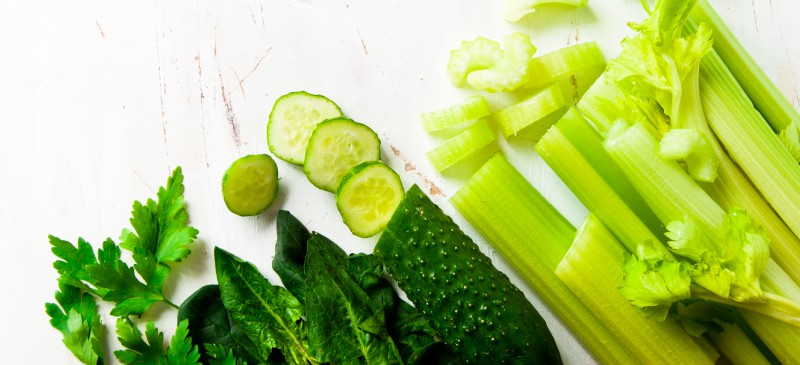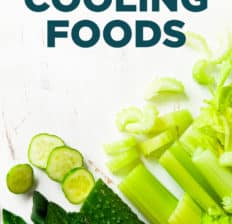This Dr. Axe content is medically reviewed or fact checked to ensure factually accurate information.
With strict editorial sourcing guidelines, we only link to academic research institutions, reputable media sites and, when research is available, medically peer-reviewed studies. Note that the numbers in parentheses (1, 2, etc.) are clickable links to these studies.
The information in our articles is NOT intended to replace a one-on-one relationship with a qualified health care professional and is not intended as medical advice.
This article is based on scientific evidence, written by experts and fact checked by our trained editorial staff. Note that the numbers in parentheses (1, 2, etc.) are clickable links to medically peer-reviewed studies.
Our team includes licensed nutritionists and dietitians, certified health education specialists, as well as certified strength and conditioning specialists, personal trainers and corrective exercise specialists. Our team aims to be not only thorough with its research, but also objective and unbiased.
The information in our articles is NOT intended to replace a one-on-one relationship with a qualified health care professional and is not intended as medical advice.
Top 22+ Cooling Foods & Herbs (Plus Benefits)
July 5, 2024

If you were to ask a practitioner of traditional medicine, “How can I reduce my body heat?” they’re likely to recommend adding more cooling foods and herbs to your diet in order to bring things into balance.
What are cooling foods, and how do they work?
A variety of fruits, veggies, herbs and other foods that you likely already include in your diet can potentially have a cooling effect, such as peppermint, melon and yogurt.
Practitioners of Ayurvedic medicine and Traditional Chinese Medicine (TCM) generally believe that foods with sweet, bitter and/or astringent tastes all have cooling effects.
While every person needs a balance of different tastes and food types in her diet in order to obtain all the nutrients and energy she needs, some are thought to benefit from cool foods more than others — especially those who show signs of inflammation, anger and other issues tied to having high amounts of internal “heat.”
What Are Cooling Foods?
Cooling foods are those that are thought to work by lowering your body temperature and helping you cope with stressors.
They help do this in part by promoting hydration, supporting digestive processes and also encouraging sweating/perspiration in some cases.
Some are also capable of helping regulate blood sugar and blood pressure due to containing beneficial electrolytes.
“Heating” foods and meals do the opposite of cooling foods — especially those that are heavy and high in a mixture of fat, protein and carbohydrates.
While not all warming foods are unhealthy — in fact, some such as grains and meat are beneficial — when consumed in large amounts they can put pressure on your digestive system to break down a complex mixture of nutrients. This requires a lot of energy because it forces your body to produce enzymes and gastric juices that build heat.
How do you know if you can benefit from including more cooling foods in your diet?
A cooling diet is recommended for people with signs of “internal heat.” This can include physical and emotional symptoms such as:
- Inflammation and pain
- Redness, swelling and throbbing
- Poor digestion, including acid reflux and stomach bloating
- Irritation, agitation
- Aggression and anger
- Anxiety
- Impulsiveness and recklessness
According to Ayurvedic principles, hot and cold foods are based on the internal nature of a food and how the food affects the three “doshas,” or body types: vata, pitta and kapha. Those with a Pitta dosha are most in need of cooling foods, while those with a Vata dosha tend to do better with more warming foods.
Another thing to clear up is the effect that different temperature foods have on the body. The physical temperature of a particular food isn’t what makes it hot or cold.
Ice cream isn’t always cooling, in other words, and spicy foods are aren’t necessarily warming. It has more to do with how foods affect one’s digestive system and metabolism.
Top 22+ Cooling Foods and Herbs (Plus Benefits)
What foods are cooling to the body? Below are some of the top body cooling foods and herbs to focus on:
- Water-rich vegetables, like cucumbers, celery, tomatoes, asparagus, various greens, zucchini and radishes
- Strawberries, cherries and other berries
- Tropical fruits, like papaya, pineapple and mangoes
- Melon, including watermelon, honeydew and cantaloupe
- Other water-rich fruits, like grapes and kiwi
- Tofu and soy products
- Coconut water and coconut milk
- Goat’s milk and goat’s cheese
- Kefir and yogurt
- Grains, including rice, quinoa, spelt, barley and oats
- Almonds
- Raw honey
- Cilantro
- Spearmint and peppermint
- Dill
- Rosemary
- Lavender
- Lemongrass
- Chamomile
- Aloe
- Cayenne pepper and other spicy foods
- Green tea
Benefits:
Because there are many different types of cooling foods, each one offers unique benefits.
For example, mint (peppermint and spearmint) are among the most popular cooling herbs, thanks to the presence of menthol in these plants that has a naturally chilling effect. Mint — fresh, in herbal tea and in the form of peppermint oil — is especially helpful for supporting digestion and reducing stomach pain and inflammation.
Many herbs and water-rich fruits and veggies also contain compounds that have natural anti-inflammatory effects and in some cases antimicrobial and calming properties.
Which food is most cooling for the stomach? Some of the best options for stomach pain, acid reflux and indigestion include:
- tropical fruits like pineapple (which contains the enzyme bromelain, known to fight inflammation)
- leafy greens
- pumpkin and squash
- coconut water
- kefir
- raw honey
- anti-inflammatory herbs, such as chamomile and mint
You might expect that spicy or pungent foods would increase heat, but this isn’t always the case.
Eating spicy foods, such as cayenne and other peppers, can trigger a nerve receptor in your tongue that detects heat and then causes your body to turn on cooling mechanisms, such as sweating. So while spice feels warm in your mouth, it can actually wind up being cooling.
If you think about it, it makes sense then that spicy and hot foods like various peppers and seasonings are popular in countries with hot climates, such as Mexico, Brazil, and parts of China and India.
How to Add to Diet (Recipes)
Because most water-rich fruits, veggies and herbs are cooling foods, there are endless ways to add them to your diet.
In addition to produce, an Ayurvedic diet that focuses on cooling one down also typically includes almonds and diary products, such as cheese and yogurt/kefir.
Many cooling herbs, such as cilantro and mint, make great additions to soups, sauces and salads. You can also try them in guacamole, tacos, pesto sauces and green smoothies.
Another simple way to reduce internal heat via your diet is to add chunks of fruit like strawberries or pineapple to plain water, smoothies or sparkling water, perhaps along with some coconut water, fresh mint and raw honey.
You can also use these to make non-alcoholic “mocktails.”
Here are other recipe ideas and ways to utilize cooling foods:
- Emphasize sweet, bitter and astringent tastes.
- Consume more raw foods.
- Eat regularly, and avoid skipping meals to keep hunger in check.
- Eat lighter meals. Skip very heavy, high-fat meals, and try to balance things out with fruits and veggies.
- Include non-starchy vegetables with all your meals if possible, especially those high in water like cucumbers, greens and celery. Try dipping raw veggie slices into dips like hummus, making a big salad or sautéing them for a stir-fry.
- Stay hydrated by consuming liquid-based meals like green smoothies and soups. Limit intake of stimulants, alcohol and coffee.
- Add fresh fruit to meals like oatmeal, toast with almond butter, baked goods and yogurt bowls.
- You can also use cooling herbs like mint, lavender and rosemary in homemade lip balms, cough syrups, skin lotions and salves.
A diet that emphasizes cooling herbs and foods might look something like this:
- Breakfast of a green smoothie made with spinach, strawberries, kefir, almond butter and a touch of honey.
- Lunch of a salad topped with goat cheese, cubes of melon and lots of fresh veggies.
- Dinner of chicken served with herb sauce and sautéed asparagus and zucchini.
Risks and Side Effects
While cooling foods and herbs are generally safe to consume, certain types can potentially interact with some medications. If you currently take daily medications to control a health condition, such as heart disease or diabetes, or if you’re pregnant or nursing, it’s best to get your doctor’s opinion before changing your diet or starting any herbal supplements.
Conclusion
- Which are the best food to reduce body heat? These are called body-cooling foods, and they include most water-rich fruits, veggies and herbs, as well as coconut, kefir, yogurt, almonds and honey.
- Cooling foods are beneficial because they can help regulate your body temperature, keep you hydrated, and balance water and mineral levels. They might also enhance digestion, blood sugar balance and blood pressure levels.
- Some ways to use cooling foods include adding them to smoothies, salads, sparkling water, stir-fries, herb sauces and yogurt bowls.
- You can also make herbal tea, cooling skin salves and balms using cooling herbs like mint, lavender and rosemary.


